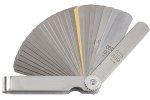ge_rik
British narrow gauge (esp. Southwold and W&LLR)
I notice that
 LGB-Sid
among others now uses PETG for his prints eg - What have you been printing.
LGB-Sid
among others now uses PETG for his prints eg - What have you been printing.
I'm sure I'm not the only person to have concerns about using PLA for models in an outdoor environment. I've tried spectacularly unsuccessfully to print with ABS and see that PETG seems to have many of the advantages of PLA (eg adhesion to bed, lack of odour when printing) without the disadvantages ( ie biodegradability).
Just wondered what people's experiences with it were and how it compares with PLA in terms of preparing the printer.
Rik
I'm sure I'm not the only person to have concerns about using PLA for models in an outdoor environment. I've tried spectacularly unsuccessfully to print with ABS and see that PETG seems to have many of the advantages of PLA (eg adhesion to bed, lack of odour when printing) without the disadvantages ( ie biodegradability).
Just wondered what people's experiences with it were and how it compares with PLA in terms of preparing the printer.
Rik


